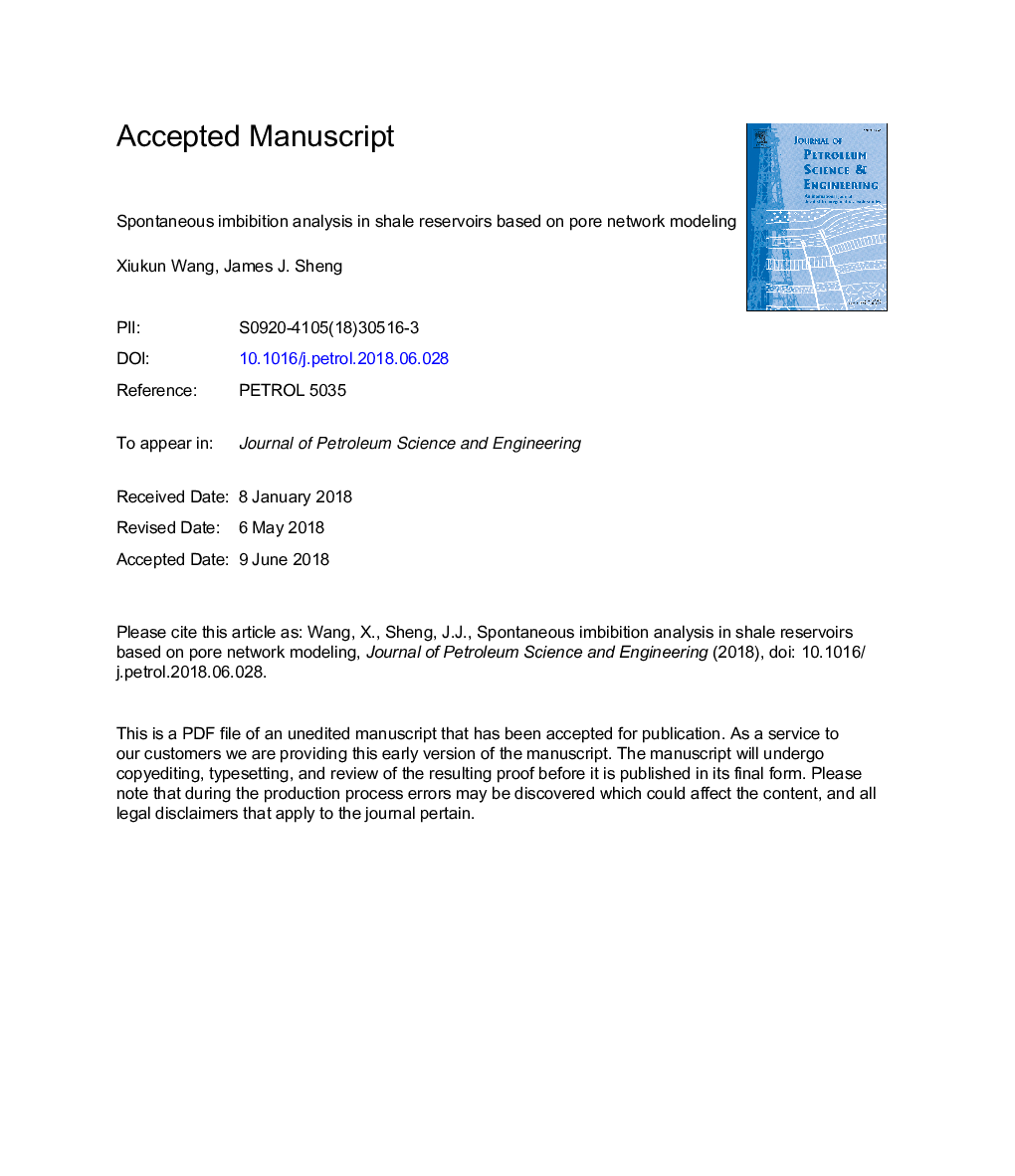| Article ID | Journal | Published Year | Pages | File Type |
|---|---|---|---|---|
| 8124615 | Journal of Petroleum Science and Engineering | 2018 | 36 Pages |
Abstract
Capillary spontaneous imbibition is vital to the successful development of shale reservoirs. The two-phase flow macro-properties of shale are significantly difficult to be measured in the laboratory. A pore network model is proposed in this work. The model is validated in the conventional Bentheimer sandstone and then applied to shale matrix with the consideration of variable wettability. Some representative relative permeability and capillary pressure curves are obtained from this pore network model. Based on an analytical solution of spontaneous imbibition, we propose a computational algorithm to calculate the oil recovery factors using the calculated macro-properties from our pore network model. Combining these two, the effects of wettability and absolute permeability on the spontaneous imbibition are studied. The absolute permeability plays an important role in the oil recovery factor induced by spontaneous imbibition. The recovery factor is proportional to the quartic root of absolute permeability. A relative small portion of oil wet pores (less than 40%) in a mixed wet formation won't prevent water from imbibing into the shale matrix and increasing the oil recovery. However, when the portion of oil wet pores is too large, the imbibition recovery drops dramatically. The attempt of this work is made to investigate the two-phase flow and spontaneous imbibition of shale reservoirs in the perspective of micro-scale.
Related Topics
Physical Sciences and Engineering
Earth and Planetary Sciences
Economic Geology
Authors
Xiukun Wang, James J. Sheng,
